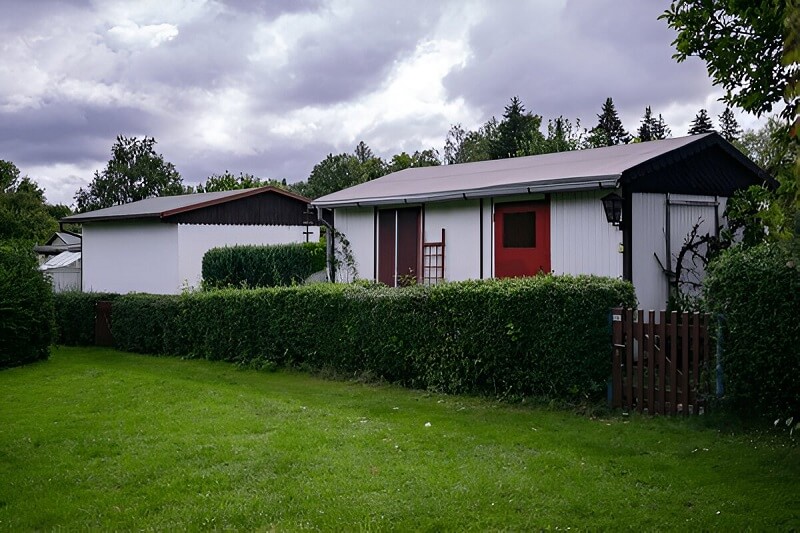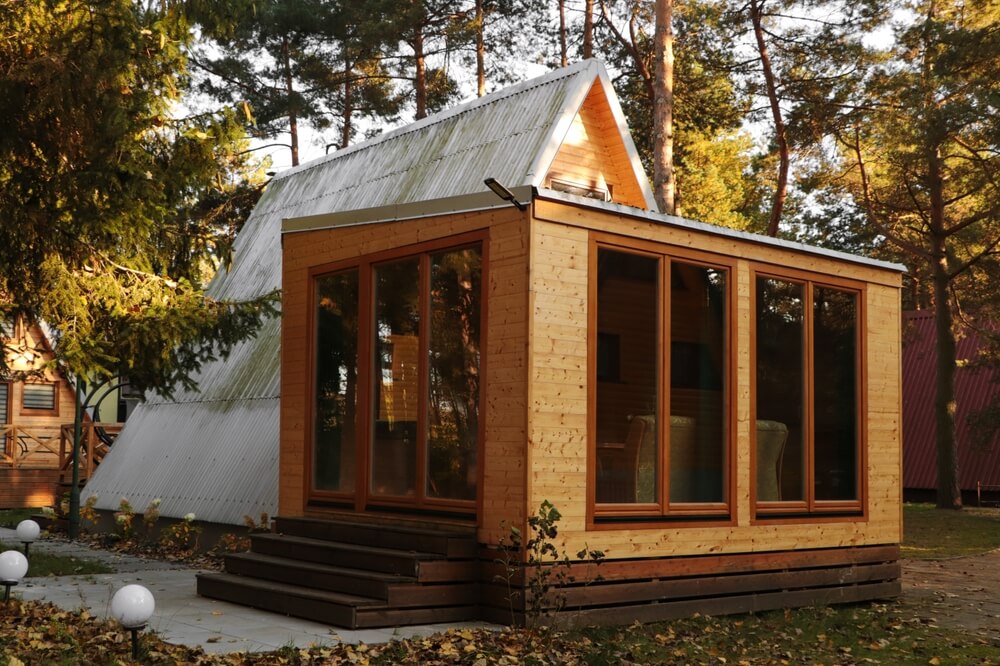Have you ever let your imagination roam free beyond the tumult around the kitchen table and into the thought of a dedicated workspace just steps from the back door? Are you tired of longer commutes or even distractions back home? What if you had a nice little sanctuary for productive work in that seldom-used corner of your garden that allows you to balance work and life effortlessly?
The concept NICER have been catching on in Australia, and who would not love them? argue with their beauty utterly? They are certainly conferring some amount of solace and comfort to those who work from home, let it be either a company employee or an artist or just someone, somewhere, searching for a quiet space that is away from home. Be it a tiny garden studio being totally enveloped by a garden chowt-nghrt or a great big garden office that serves as a second guest room, finding the space of your dreams is more achievable than Rosen said.
Starting from the basic aspects of planning and getting council approvals to furnishing and making suggestions for comfort throughout the year, this guide covers it all. Get layout inspiration, find out faculties on sustainable materials, and practical tips to tune your workspace to your needs. Let’s get moving and implement those garden office dreams of yours!
Garden Office Design Must-Haves

From very small studios to actually very big garden offices
Size does matter concerning garden offices, but it is not always possible that bigger is always better. This type of forest could be built in small dimensions around 2.5 x 3 m and would be a fine for some writer or digital cowboy, just so far that it is possible to fit some desk chairs and shelving in there as well. These clusters in this smaller version find it easy to fit into so many gardens and somehow ride under most of the council approval requirements.
If one wanted more options to spread, go for a 4m x 5m masterpiece to allow for more working zones, nooks for comfortable seating, and somewhere to hang their admired paintings. When it comes to more garden offices at 6m x 4m less or more, one could form a boardroom in Mal of course with equipment to set excerpt off. There is a little word of wisdom again: give it a good thought to truly understand how you will actually be using these spaces on a daily basis; we end-overestimating our requirements in our pre-selection efforts and then end up spending hot-cool hours into a lot of unnecessary square meters.
Windows and Natural Light: An Inspiration Workspace
The availability of natural light does wonders for your garden office experience. Well-placed windows greatly reduce strain on the eyes while also potentially lifting one’s mood or connecting people to the outside paradise. Give preference to at least two-walled windows to minimize shadows and allow for cross-ventilation.
In the Southern Hemisphere, the northern-facing windows will provide a steady amount of gentle light across the day with little heat. Over-sized sliding or bi-fold doors have proven huge in achieving that effect of moving the inside outside, particularly when you are getting an office space constructed near or looking out into an entertaining area. If you wish for more sleep at night or more natural light during the day, skylights or clerestory windows can provide added brightness without occupying too much wall space or being too much tacky.
Insulation and Climate Control for Comfort throughout the Year
Australian weather can whip on an altogether different kind of well-done, so insulation would not be an optional consideration when comfort is at stake. Quality insulating wall and ceiling will also keep out heat in summer but leave warmth in winter without burning a hole in your pocket when it comes to power bills. When looking for insulation, go for the high R-rated ones-R-value of 1.5 for walls and 3 for ceilings would be a good place to start.
I know it seems a terrible idea to put double-glazed windows on a very tight budget, but it really changes the game in terms of temperature control and noise insulation. If that was tight, consider skipping double-glazed windows on only those facing through ruthless western sun. Then add that up with some ventilation, i.e. ceiling fans, louvre windows, or just some small split-system A/C on that extreme day.
Power and Internet: Getting Connected in Your Back Garden Office
Providing the garden office with power usually implies supplying it with an underground cable taken from the main electrical board. Such a supply scheme can barely be attempted through DIY methods. Therefore, a licensed electrician should be engaged culturele to ensure compliance and safety. When collars or hats are fed free-a definitely worthier consideration-needless to say, they’ll need plenty of power points: more than they’ve counted so far Driverser lesson: think about more than where your desk is, figure out where your gear ends up to avoid ugly carpet strips.
Another thing that deserves some serious thought is the internet connectivity. For casual use, Wi-Fi extenders can work, but the real deal is connecting your office through an ethernet cable, which assures a reliable and fast connection to hold video conference calls and download huge files. Running a CAT 6 outside cable along with the power one saves from digging up the garden two to crack a joke; some people consider a separate internet connection altogether.
Garden Shed Office Ideas: Conversion vs New Construction
Converting an Old Shed into a Working Office Space
That dusty old garden shed might just be your ticket to the most affordable home office. Usually, it costs far less to transform existing structures rather than building from scratch and you are already half-way there with the walls and roof. Start off by assessing the state of the shed – check rot, rust or structural problems that make the process more trouble than it’s worth.
So, the conversion usually starts with a clean and pest treatment. Patch any damaged cladding, repair has to be done if it’s not watertight. Most sheds will not have had their walls and ceiling spaces insulated, so budget for that later on in the project. You may also need to raise the floor level to allow for insulation and moisture barriers, which will also be a neat place to run electrical cables under the floor.
When to Build from Scratch: Pros and Cons
With newly built, you get total control on every new design aspect of your garden office. You may perfect the layout to exactly what you need, orientation from start to end with windows, and you can also incorporate latest standards for modern insulation. Importantly, new constructions tend to be more energy-efficient in terms of utility usage, maintenance, and longevity when compared to conversions.
Disadvantages? Their costs and time associated with them. New construction signifies everything starts from zero-including preparation of sites, foundations, and longer, sometimes, council approval processes. You will work closely with multiple tradesmen, and weather delays can stretch your deadline. The monetary investment will be incredibly higher, but it’s sure worth it to obtain everything you want without compromise.
Prefab Vs Customized Garden Offices
Prefab garden offices are excellent in transforming markets with extraordinary toughness; they deliver comparable plugs at prices competitive to professional-quality external structures. Such modular buildings arrive more or less ready to site with less installation time on site to days instead of weeks to hurry. The quality varies the difference, though; researched well and reviewed before making final commitment. Best prefab options rival custom builds in appearance and function.
However, custom builds are gold standards to possess something that is entirely exceptional. Those who work with architects or designers are ensured that their garden office complements their home’s style as well as maximizes specific conditions on their site. Such special features and unusual dimensions or specific materials can be integrated that are not present in the prefabricated options.
Practical Considerations When You Build an Office in Your Garden

Security for Your Outside House Office
Most garden offices in the planning stage forget about security and any investment or equipment that they will put in therein; however, it is extremely important that you consider quality doors and windows with multi-point locking systems. Glass that has laminated or toughened properties provide extra resistance against break-ins as compared to normal glazing. Place valuable equipment away from windows and consider privacy film to prevent casual observers from window-shopping your setup.
Modernity in technology offers discrete, optimum, and milled security for garden buildings. New-age wireless alarm systems that are either connected to the home security system or operate independently monitoring energy-efficient smart cameras that give remote access are very handy. One can even use motion-sensor lights to guard against opportunistic intruders. Some insurance companies even offer discounts on garden offices because they were properly secured, thereby offsetting the investment costs for the security.
Weatherproof and Maintenance
Australian weather tests garden offices throughout the year. A lot of quality constructions handle it well, but problems grow among the little ones that are becoming stalled as part of prevention measures to become great problems. Setting biannual inspections to check roof integrity, gutter toxins as well as the sealed statuses around windows and doors: Clean out debris from around your buil
Simple maintenance calendar-tasks recording their due dates for maintenance. Have touch-up paint on hand for expedient touchups. Fix things as they arise small leak become unbelievably costly water damage rather quickly. Mostly garden offices need less maintenance when properly done, but absolutely ignoring them shortens their life span dramatically.
Running Costs: What Do You Expect
By knowing the running costs, you can then budget realistically the funds necessary for garden office use. The size of an office and the equipment it houses can make a difference with the consumption of electricity; however, $30-60 is what one can expect in a month for average office use.
Insurance is another factor. Some home insurance policies include garden offices up to specified amounts automatically; for others, it’s an additional plan. With that said, budget about $20-40 monthly. If the room is being used for business, then professional indemnity or business insurance may be needed. Find out how working from home may affect existing policies.
Ideas-Inspiring Backyard Studios For Various Careers
The Artist’s Garden Studio
Art is more than just physical space – it’s an inspiration. Design your garden studio with north-facing windows or skylights to get that continuous natural light for correct colour matching. Deep sinks are a must: they’re for washing brush and hand, surfaces handle creativo mess. Sealed concrete floors work beautifully, developed character through paint spatters later on their lives.
Storage should be specially thought out for art supplies. Vertical rack systems are for canvases of all sizes. Papers will be organized and flattened in shallow drawers. Open shelves-another grab for viewing all of those inspirational things while tools stay within reach. A small wall gallery of progress – stepping back to view pieces from distance gives help in measuring compositions.
The Writer’s Retreat
Writers want space where there are no interruptions, where they could bend their writing minds, and thus garden offices could be the perfect creative refuge. Behind the desk is to be placed a garden view, and a clear blank wall will depend on the writer’s own preference. Some writers do great work watching birds and weather outside from their domains, while others prefer visual minimalism.
Support a walker in case the energy is starting to fade. An inviting reading chair, set just so in good light, does research and editing of printed drafts. Analog tools should be included, like whiteboards for plotting, corkboards for inspirational images, perhaps even a typewriter for those moments when screens feel too much.
The Therapist’s Calming Space
The garden office must allow both the therapist and an onset of warmth to balance professionalism with warmth. Ensure a separate entrance for the client, ideally not even seeing the receiving room. A small waiting area, even just a covered bench with plants, provides transition space. Install second sound-proofed walls – clients should feel safe with complete confidentiality.
The interior should, in turn, give a calming effect, rather than a clinical environment. It is this feel that soft furniture, warm light, and mainly natural materials form. Include tissues, water, and comfort items discretely within reach. Seating arrangements are vital. No desk barriers easing conversation, but rather making furniture groupings for discussion. Floor cushions are an option for some therapists to give an alternative seating arrangement.
Making Your Garden Office Work All Year Round
Summer Cooling Strategies
An Australian summer, it tests a garden office as far as comfort goes. Even now, passive cooling works wonderfully if it has been thought of early and foremost. Office orientation should minimize western sun. Deep eaves or pergolas shade walls and windows during peak heat. That wall is shaded and green in the west by leafy vines when the summer comes in.
Design ventilation to keep your offices cool in relative comfort without the need for constant conditioning. All windows opened together induce cross-breezes. Hot air naturally escapes through vent on the ceiling. Whirlybird vents or solar-powered extraction use airflow while offices are secured. Among their many benefits, light-coloured roofs reflect heat more than the darker ones.
How to Heat for Winter
Winter comfort starts with the quality of insulation and draught proofing. Check the seals of the door and window each year. Heavy curtains add insulation on freezing nights. Covering hard floors with carpets puts warmth underfoot. You should try not to put desks next to cold walls and windows at all.
Heating can be very simple or very sophisticated. Electric panel heaters are silent, warm up perfectly for concentration, and can be put in any corner of the room-to-interior. Small wood stoves add ambience along with warmth but need proper flues and safety clearances to get rid of smoke. Heat and cold come in one system from the same reverse-cycle air conditioner.
Battling the Australian Supreme Weather Extremes
Garden offices in Australia are more than used to the usual seasonal changes. Preparing a garden office against bushfire includes ember guards or metal shutters and maintain cleared zones around buildings. Keep gutters clean and have sprinkler systems ready. Some parts of the country require special bushfire construction standards.
Buildings need to be elevated beyond the area prone to flooding, and important items must be stored in waterproof conditions. Hail regions benefit from impact-resistant roofing. On very hot days, people might have to leave their garden offices and set other arrangements for working outside the home. Insurance covering garden offices for any extreme weather events is, however, quite comforting when you find yourself in such an event.
Final Impressions: Bringing Dreams to Reality
Perhaps the greatest beauty of a garden office is that it has the potential to change how you work and your property. Garden offices do much more for homeowners: beyond increasing productivity while wiping out commutes, they keep you connected to nature in daily life, easily define work-life boundaries, and create spaces that are really just for you. Thus, make that first step-you measure your garden, formulate your ideas, and start working towards that garden office dream. Your future self will thank you every morning when you step out the back door into your perfect workspace.







